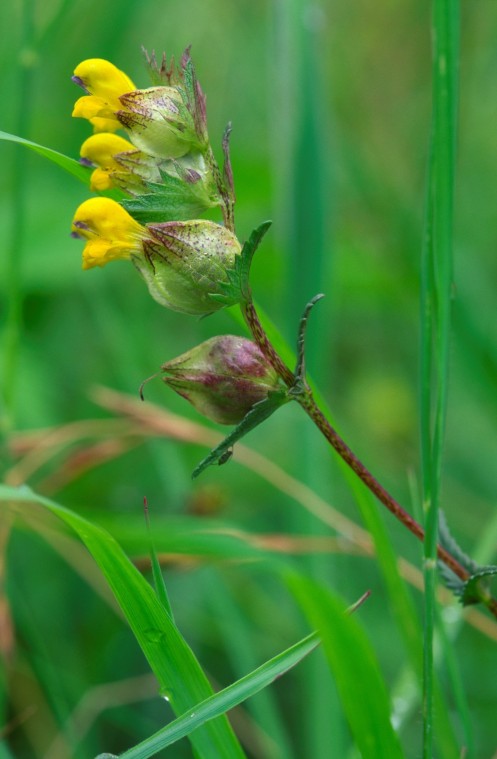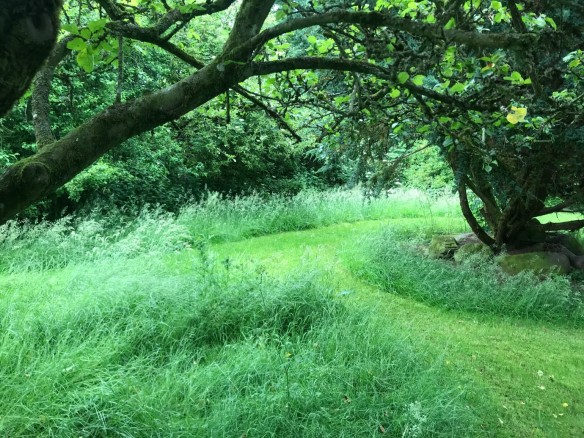Why we should help pollinators
Insects are vital in the functioning of healthy ecosystems and provide us with useful services such as the pollination of crops. Unfortunately, some pollinating insects such as bees, hoverflies and moths are experiencing significant and widespread decline. This is largely due to habitat loss, as over 97% of our flower rich grasslands have disappeared from the British landscape in less than a century. Creating good quality pollinator habitat isn’t as difficult as you might think and could help to restore local insect populations, as Apithanny Bourne explains.
What can I do to help?
It’s easy and rewarding to garden for pollinators – regardless of the size of space you have available. The main requirement is to provide both nectar rich flowering plants and larval food plants – catering for all stages of the insect lifecycle. There are many options for introducing nectar into the garden depending on the size of space and resources available to you. This blog post will focus on how to create a native wildflower meadow in a garden or area of greenspace.

Devil’s-bit scabious
Planning a pollinator meadow:
Before designing a meadow, it might be useful to do some research into which pollinator species occur in your area. This will vary regionally but also depending on whether you live in an urban or rural habitat. Many species, such as the Buff Tail Bumblebee (Bombus terrestris) are generalists – meaning they can thrive in a variety of habitats and feed on a number of plants. If you are lucky enough to have more specialist species where you live, you can consider planting the relevant food plants to help them.
The Bumblebee Conservation Trust have a useful Identification Chart
Preparing ground for wildflower seed:
A meadow need not be large, as even a strip or square meter can produce a great display of wildflowers. The most popular and affordable method of achieving this is by sowing seed directly onto bare soil. For smaller areas, it may be possible to prepare ground by hand with gardening tools. Alternately, larger areas of turf can be removed efficiently with a turf cutter or rotavator. These items of machinery are expensive to buy but can usually be hired locally for an affordable daily rate. It’s important to remember that wildflowers favour nutrient-poor soils and it can take time to reduce the fertility of land which has been regularly treated with fertilisers (e.g. lawns and former arable pastures). Make sure that no chemical fertilisers or manure are added to your future meadow site.

Wildflower strip being prepared with a rotovator. (Image (c) Apithanny Bourne)

Winter preparation of a wildflower patch, ready for sowing in early spring. (Image (c) Apithanny Bourne)
Where to source plants?
It’s good practice to source seeds and plants locally if possible, to account for regional differences in climate. One of the best (and cheapest!) ways is to swap seeds and cuttings with friends – this way you can also be sure they have not been treated with any pesticides or herbicides, as is often the case in garden centres. Alternatively there are some great nurseries in Scotland who focus on providing a wildlife friendly service. Most garden centres and supermarkets also now use the pollinator friendly logo – look out for it on seed packets and plant labels.

Look out for this label on plants and seed packets
Which species to grow?
Deciding which species to plant can be difficult, thankfully there are many existing resources to help you (see links at the bottom of this post). A true meadow should contain a mixture of native perennial wildflowers and grasses – which will provide a good supply of nectar year after year. Grasses might not seem an obvious choice to put into your nicely prepared ground, however native grass species are an important food source for many insects. Avoid colourful annual mixes which are often sold in supermarkets in spring – although eye-catching, the poppies, cornflowers and lack of grasses in these mixes are not a true representation of a natural meadow.
The type of plant species required will largely depend on the type of soil and how waterlogged it becomes – however popular choices include yellow rattle, common knapweed, yarrow, birds-foot trefoil, meadow buttercup, red clover, tufted vetch, lady’s bedstraw, devil’s bit scabious, meadow foxtail, sweet vernal grass and common bent to name just a few. Why not take a look at the different seed mixes available through Scotia Seeds to get an idea.

True meadow containing native perennial wildflowers and grasses.
Yellow Rattle
Yellow Rattle is the most important addition to any new meadow and has earned itself the nicknames “meadow maker” and “nature’s lawn mower.” This lovely yellow-flowered plant will parasitise dominant grass species, keeping them under control and naturally increasing the species diversity of grasslands. Its seed can be bought in bulk and sown during the autumn and winter months. If you add only one species to your meadow – make it this one!

Yellow rattle
Seeding
Wildflower seeds (particularly yellow rattle) often need to have their dormancy broken by cold winter weather, so it’s best to seed your meadow either in the autumn or spring. The type of seed mix you purchase may also influence your sowing time, as some mixes are aimed at providing early spring or late summer nectar – check the planting guidelines to be sure.
When seeding a large area it can be difficult to remember where you have already been. Try adding some fine sand to the mix (in the ratio one part seed to three parts sand) to remind you! You won’t need to rake in the seed you scatter, but do walk over it to ensure good contact with the soil.
Natural Meadow creation
If removing turf sounds like a bit too much hard work then fear not – there is a less strenuous alternative, which simply involves altering your mowing regime. Try to significantly reduce the frequency of cuts and see if any wildflower seeds already existing in the seed bank begin to grow – you may be surprised! This is a good way to quickly make your garden more pollinator friendly, as even common plants such as clover and dandelions are fantastic nectar sources.
If the natural cutting method isn’t quite achieving the results you hoped for, plug plants are a great solution. Although buying ready grown plants is a bit more expensive than seed, planting plugs into existing grassland does have a greater success rate.

Garden where areas of lawn are left uncut during spring and summer. (Image (c) Apithanny Bourne)
Meadow Maintenance
People often think that meadows should be abandoned completely to nature, however this is not the case. Performing a cut once or twice a year is important to maintain species diversity and prevent rank grassland (where tall grass falls over in winter, preventing anything from growing the following year). Try to perform a cut in early spring before plants start to grow and then again in late summer (after plants have set seed). Ensuring that all cuttings are removed quickly to maintain low soil fertility.
Many invertebrates and small mammals rely on grassland vegetation to overwinter, so it’s best to maintain a mosaic within you meadow. For example leaving one quarter uncut and rotating this each year.

Cutting of meadow at end of summer
Find out more
Identifying meadows: http://www.magnificentmeadows.org.uk/advice-guidance/section/what-type-of-meadow-do-i-have
Creating meadows: http://www.magnificentmeadows.org.uk/advice-guidance/section/how-can-i-restore-or-recreate-a-meadow
All images courtesy and copyright of Apithanny Bourne where stated, others copyright Lorne Gill/SNH.
Please share your meadow creation photos with us @Scotpollinators !







